The Intel Haswell Refresh Review: Core i7-4790, i5-4690 and i3-4360 Tested
by Ian Cutress on May 11, 2014 3:01 AM ESTSynthetic IGP Benchmarks
OpenCL – CompuBench: link
CompuBench is an OpenCL and RenderScript benchmark designed by Kishonti for both CPUs and any GPGPU capable device. While it offers almost two dozen tests, we select the more real-world tests in terms of fluid simulation and image analysis benchmarks and test on the CPU and IGP respectively. The CPU results are earlier in the review, and the IGP results are below.
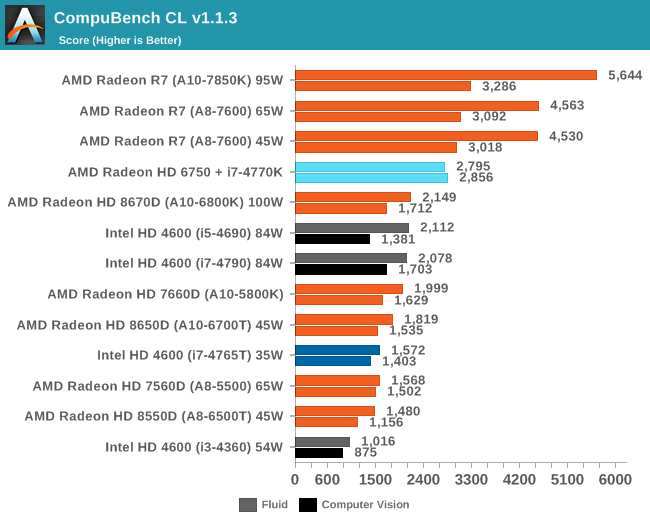
CompuBench responds well to actual cores, but not so much to threads, given by the close scores of the i5 and i7 CPUs. AMD still wins here.
Unity – Graphic Scene 720p: link
As part of my IGP testing I went searching for a couple of new Unity based benchmarks to help decipher the line between the desktop graphics solutions and those that are not so great. First up is a graphical humdinger, implementing a complex scene with lighting effects (including fluid simulation, shadows, SSAO, Bloom). We run the benchmark at 720p with the highest graphical settings, reporting the average FPS.
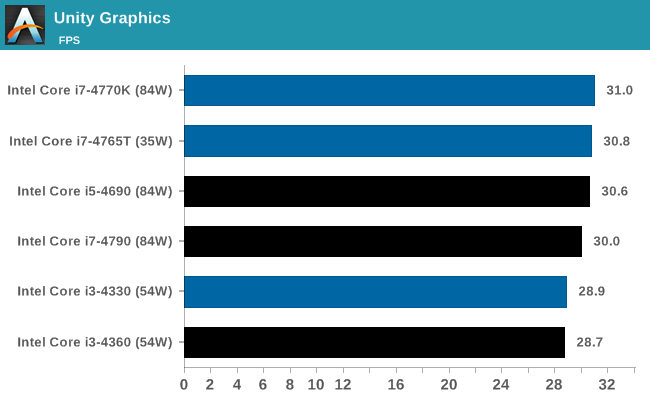
The HD 4600 seems relatively CPU agnostic for complex graphics in Unity. More GPU power seems needed.
Unity – Draw Calls: link
Next up is a benchmark limited by draw calls rather than rendering complexity. The scene generates simple Nintendo Gamecube polygons that fall due to gravity and bounce around until stationary. The scene continuously spews out these polygons until three consecutive frames fall under a 20 FPS average. We run the benchmark at 720p at simple graphic settings to minimize the graphical complexity, take the number of consoles that spawn from each run and average over several runs.
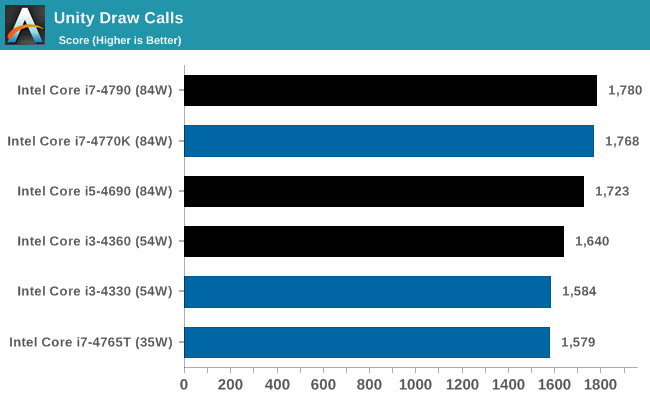
3DMark
The synthetic tools from Futuremark have been on the benchmarking landscape for over a decade, with each generation designed to tackle new problems as either the CPUs or GPUs become too powerful. Here we test 3DMark 06, 3DMark 11 (Performance) and the latest 3DMark.
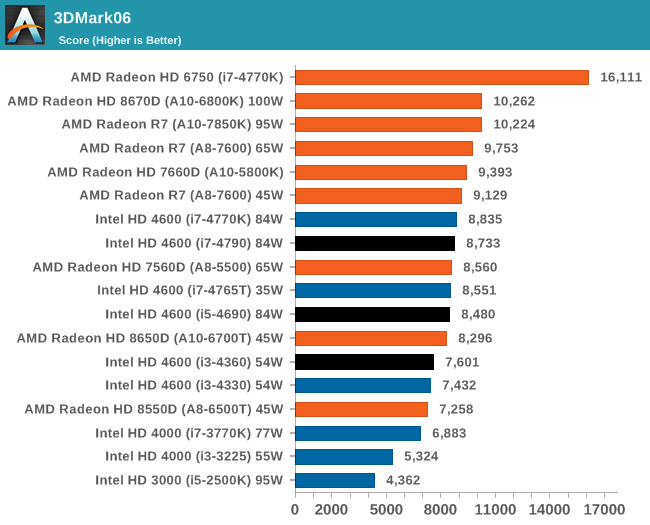
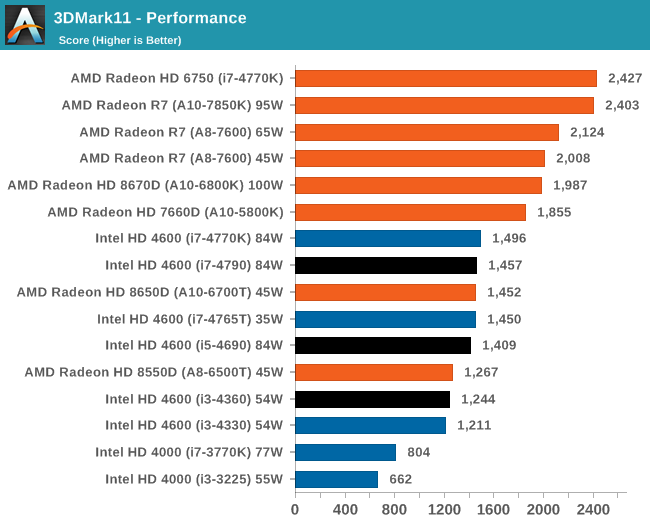
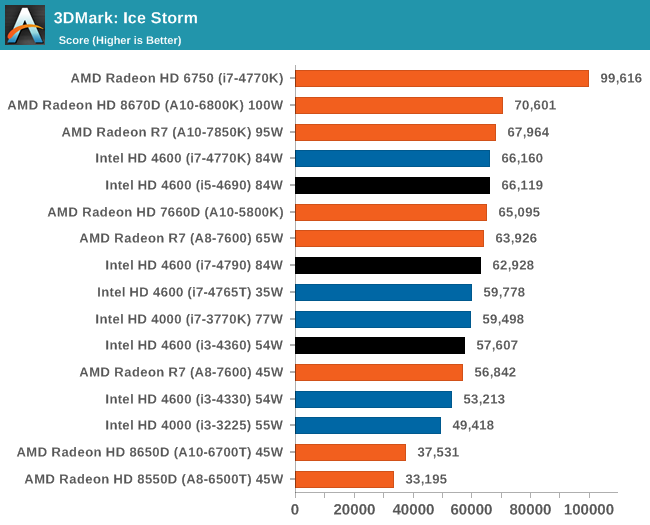
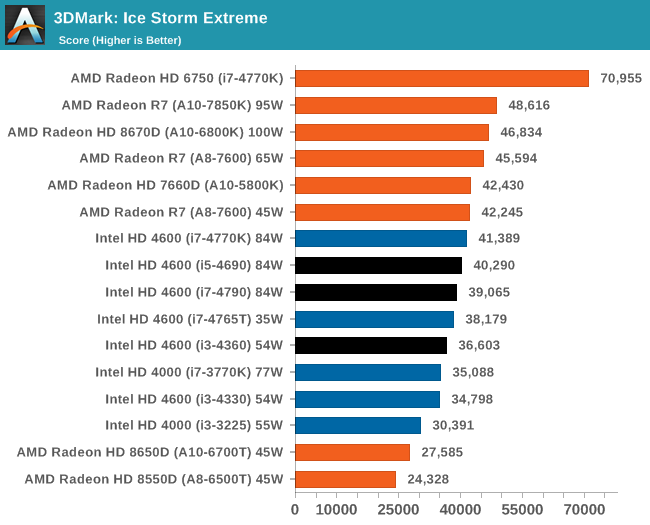
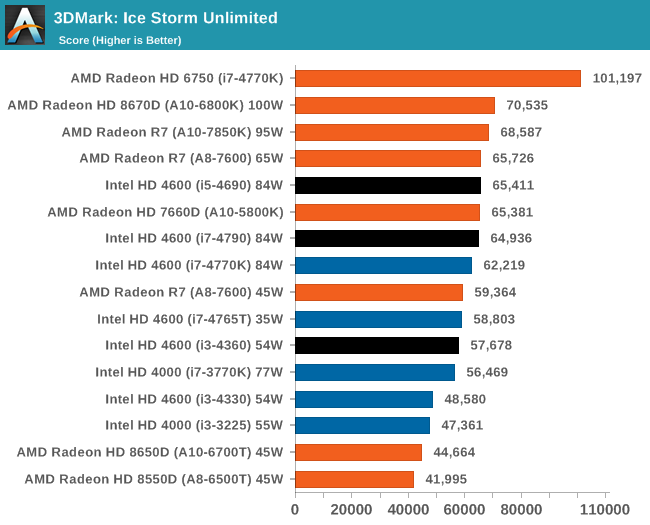

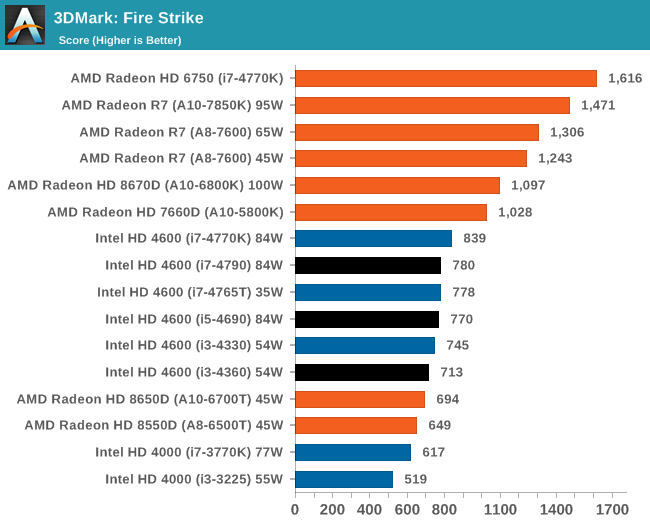
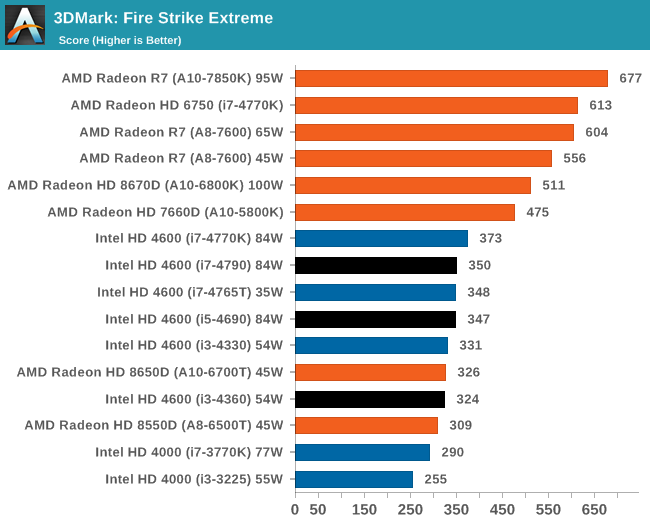
For CPU limited testing, such as Cloud Gate, the Intel i7 pulls ahead with the i5 quickly in tow. For the others, AMD has the lead.
Tessmark
The latest version of TessMark is designed to focus on tessellation via OpenGL 4. We run the latest version of the benchmark using the high resolution map set at maximum tessellation while 1080p full screen, reporting the average FPS.
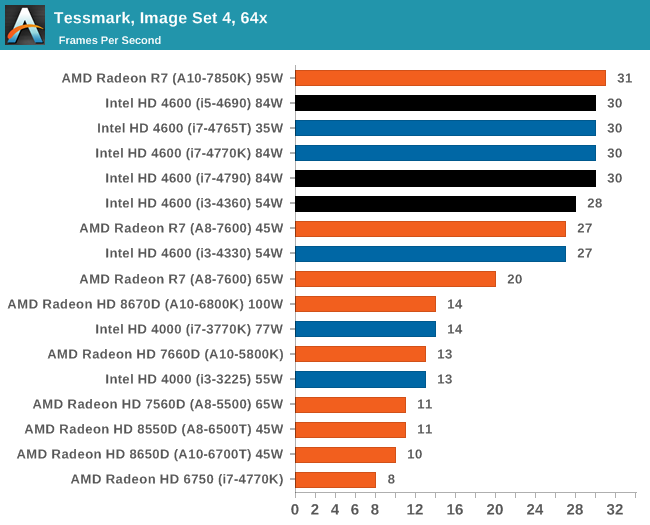










130 Comments
View All Comments
etamin - Sunday, May 11, 2014 - link
I feel that a whole lot of unnecessary effort was put into the benchmarks. But we appreciate the effort of course.I'm looking forward to SATA Express. Are there any compatible consumer level M.2 SSDs currently available?
weilin - Monday, May 12, 2014 - link
Yup, look for the models below in M.2 interfaceIntel: 530
Crucial: M500, M550
Misc: MyDigitalSSD, Samsung (only second hand/OEM stuff, no retail presence)
jjj - Sunday, May 11, 2014 - link
But there is competition, more than they ever had. You got tablets and phones killing PC sales and Intel is just sabotaging the only PC segment able to create any hype around PC. There is nobody else that really gives a damn about their products but hey they would rather have 60% margins instead of 58% even if they lose us too.Instead of giving us a 300$ 8 cores chip with no GPU, they are giving away free tablet Atom because that will help.....
juhatus - Sunday, May 11, 2014 - link
I totally agree, Intel should really push PC again, not replace schim's with better ones.bji - Sunday, May 11, 2014 - link
Intel cannot generate sufficient returns on its R & D dollars anymore. Nobody in the consumer market cares that much about faster Intel chips except CPU enthusiasts, and it's not a market that can even come close to supplying enough money to fund the R & D necessary to significantly advance x86 performance.You can blame AMD for not supplying enough competition, but a bigger part of the equation is that faster Intel chips don't sell "enough more" than current generation ones to justify spending huge amounts of R & D money on them.
You can look at this as a sad fact, but I actually like it. I can by a laptop now for cheap that is so overly spec'd for my needs that I essentially never need to upgrade, saving me money. Software companies cannot depend upon ever increasing chip speeds, they have to become better at producing efficient software in order to have the headroom for new features that used to be provided by ever increasing chip speed.
Advances in mobile computing are where it's at, and everyone knows that already ...
Antronman - Monday, May 12, 2014 - link
Buddy, you've never built a PC, and I'm assuming that you don't have a hardware-heavy job.bji - Monday, May 12, 2014 - link
Wrong on both counts.Shadowself - Monday, May 12, 2014 - link
To some extent you're correct, but the reality is that the reasons are interdependent.Current performance increases from one generation to the next (Sandy Bridge to Ivy Bridge to Haswell and anticipated into Broadwell) are only 10% - 20% per generation. I, and many like me, buy at the top of the performance range and now use that machine for a few years so that we get a significant performance jump with each new machine purchased. Back 20+ years ago when each generation was 50% to 100% faster I upgraded each generation. It's just not worth it to do so anymore for just a 10% - 20% increase. The aggregate cost of purchasing machines every generation over a few years for such moderate increases in performance is too high.
Likely Intel (and AMD) are into the range of diminishing returns on performance increases. Unless there are huge architecture changes in the upcoming Skylake series I expect the 10% - 20% increase per generation to continue for at least three more generations -- Haswell to Broadwell, Broadwell to Skylake, and Skylake to Cannonlake -- (and maybe go to 5% -10% performance increase in the Skylake to Cannonlake transition).
Small increases in performance keep people from buying every generation. People not buying every generation limits profits and what can be put into IR&D. Limited IR&D produces small increases in performance. And the cycle repeats.
alacard - Monday, May 12, 2014 - link
The increases over the past few generations have been no where near 10-20 percent.Sandy to Ivy was ~5 with that increase coming solely from power management/boost tweak. Clock for clock the cores perform identical (to get this metric you simply disable all the power management/boost functions in the bios and benchmark from there) with Ivy offering a slight decrease in consumed wattage.
The Ive to Haswell performance increase - with a few exceptions - is < 10% in almost all tests, with consumed wattage actually increasing from ivy.
Unfortunately, the Intel performance curve over the past 4 years is actually far more compressed than you paint in your post. With the exception of a couple of new task specific instructions we've had essentially less than 10% performance gains during that time
BadThad - Monday, May 12, 2014 - link
I agree Shadowself! I'm actually still mainly on a Q6600 system as it meets all of my needs. At last I'm at the point where I'm going to Z97 as the performance benefits and feature sets are finally worth it for my needs.